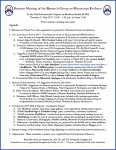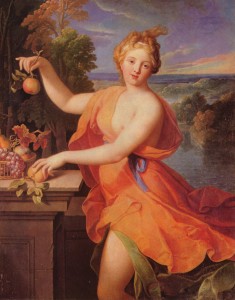2019 International Congress on Medieval Studies Program
September 25, 2018 in Announcements, Conference, Conference Announcement, International Congress on Medieval Studies, Uncategorized
Events
Sponsored and Co-Sponsored
by the Research Group on Manuscript Evidence
at the 54th International Congress on Medieval Studies
9–12 May 2019
[Published on 24 September 2019, with updates. With the achievement of our Activities at the 2018 Congress, we offered the 2018 Congress Report, and move forward with the preparations for the 2019 Congress. Now we announce the 2019 Congress Program. For updates, please watch this space and our Facebook Page.]
*****
In 2019, the Research Group on Manuscript Evidence celebrates its 20th year as a nonprofit educational corporation and its 30th year as an international scholarly organization. Accordingly, we aim to hold both customary and extra-special events, both at the Congress and elsewhere.
We have a tradition of celebrating landmark Anniversaries, both for our organization, with organizations which which we share anniversaries, and for other events. As described, for example, in our 2014 Anniversary Reflections. For 2019, our events aim to represent, to explore, to promote, to celebrate, and to advance aspects of our shared range of interests, fields of study, subject matter, and collaboration between younger and established scholars, teachers, and others, in multiple centers.
In June 2018, we learned that most — not all — of our Session Proposals (due on 1 June 2018) for the 2019 Congress were accepted by the Congress Committee, so that we progressed to their Call for Papers. We regret the rejections for proposed Sessions which, for example, promoted initiatives by Graduate Students and by Independent Scholars, and which we wished to support. However, we worked with what was granted. With the strong responses to that Call (due on 15 September), we selected the Programs for the Sessions, the details of which we submitted to the Committee for review (due on 1 October). Now we announce the Programs for our Sessions, as well as our other Events planned for the Congress.
Who, What, Why Not
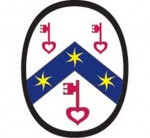 As in recent years, we co-sponsor Sessions with the Societas Magica (2 Sessions). It will be the 14th year of this co-sponsorship. It will be the first year of co-sponsorship with the newly-founded organization Polytheism-Oriented Medievalists of North America (POMONA).
As in recent years, we co-sponsor Sessions with the Societas Magica (2 Sessions). It will be the 14th year of this co-sponsorship. It will be the first year of co-sponsorship with the newly-founded organization Polytheism-Oriented Medievalists of North America (POMONA).
Also, like the 2015–2018 Congresses, we plan for
- an Open Business Meeting and
- a Reception.
As usual, we aim to publish the Program for the accepted Papers, as their Authors permit. Abstracts for previous Congresses appear in our Congress Abstracts, conveniently Indexed both by Year and by Author.
Background and Foreground
Glimpses of our co-sponsored Receptions at the Congress appear in the souvenirs of our Celebrations and in the Reports for the individual Congresses (2016, 2015, and 2014 Anniversary).
The Agendas for our Open Business Meetings are available for your inspection:
These 1-page statements serve as concise Reports for our Activities, Plans, and Desiderata.
While we’re here: Interesting, isn’t it, that these Agendas have rapidly become one of our Most-Downloaded Offerings? Some of them now stand among the Top 5 Most Popular Downloads on our site.
The most popular downloads still remain our copyright and FREE multilingual digital font Bembino, and some Booklets from our Symposia and Colloquia. So far, those “best sellers” — they are FREE — include:
- Words & Deeds (from our 2016 Symposium)
- When the Dust Has Settled (from our 2014 Colloquium)
- Predicting the Past (from one of our 2015 Congress Sessions).
These publications, like most of our Publications, are FREE, but we welcome donations, both in funds and in kind, for our nonprofit mission, with the option of tax-deduction for your Donations.
We look forward to your contributions.
*****
And now, here is the plan for 2019 at the International Congress on Medieval Studies. We announce the accepted Sessions, describe their aims and scope, and provide information for sending your questions and your proposals for papers to the Session Organizers. Herewith our Call for Papers for the 2019 Congress.
Sessions for the 2019 Congress
 I. Sponsored by the Research Group on Manuscript Evidence
I. Sponsored by the Research Group on Manuscript Evidence
1. In the Absence of Manuscript Evidence:
Considering Lacunae in Manuscript Studies
The Aim
While our organization’s abiding mission is to consider the material evidence of written records “as carriers of text, archaeological artefacts, works of art, layers of history, and monuments of culture” (as declared in our Mission Statement), we must wonder what happens when lacunae — whether from scribal intentions, accidental omissions, temporal vicissitude, or other means — alter or limit the topography opened by a manuscript.
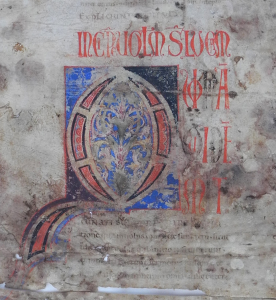
Opening Title and Opening Words of Luke. Despoiled Large-format Romanesque Bible made in Italy. Budny Handlist 1.
For example, how have previous receivers and transmitters negotiated these lacunae? How do editors amend, elide, or underscore them? How do scholars interpret the gaps and silences occasioned by them? This session may explore some options and present telling case-studies.
Co-organized by Justin Hastings and Derek Shank
II. Co-Sponsored with the Societas Magica
2. Animals in Celtic Magical Texts
A variety of magical texts in Celtic contexts include animals or animal imagery in their spells. The creatures range from snakes, beetles, and worms, to dogs, wolves, deer, pigs, and birds — and many other creatures besides. The texts range from individual Irish incantations and collections, as found in the St. Gall Incantations, the Reichenau Primer, the Stowe manuscript, and in the Leabhar Breacc, amongst many others.
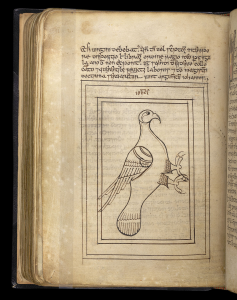
© The British Library Board. Harley MS 1023, folio 64 verso. Part-page framed illustration in ink of the Eagle Symbol of Saint John the Evangelist.
Some mantic operations, like the imbas forosnai ritual detailed in the early 10th-century Sanas Cormaic, include the use of pig-, cat-, and dog-meat in their formulae, whilst the tarbfheis described in some literary texts required the slaughtering of a bull. Charms designed to repel rats and other vermin were also employed, including their use into more modern periods. The medieval literate record also contains many occurrences of animals in relation to the magical actions of characters, whether human or divine, or of “magical animals” of various sorts appearing as messengers, omens, or agents and characters in their own right. Whether animals or animal parts are used as components or metaphors, sacrifices or spoken formulae, narrative elements or desired outcomes, Celtic texts have ubiquitous instances of animal imagery and involvement.
Papers in this session may relate to theoretical approaches toward the material of animal imagery, thematic explorations of different types of usage of animals, or attempts to survey, catalogue, and analyze the nature of particular animal appearances in these texts and operations, as well as anything else which may relate to the broad topic of animals and Celtic magical texts.
Organized by Phillip A. Bernhardt-House
3. Embedded in the Mainstream: Ritual Magic Incorporated in ‘Legitimate’ Texts
Although texts of ritual magic circulated widely during the later Middle Ages, the opprobrium they attracted both elevated the risks for their owner-users, and limited the physical lifespan of the codices themselves when they caught the attention of Church authorities. Consequently, texts of ritual magic often survive not as independently circulating treatises, but rather as subsections of more innocuous-seeming treatises on other topics such as natural philosophy or medicine. This session aims to bring to light and discuss this particular sub-category of magical treatises, their transmission histories, and the intertextualities between them and their textual “hosts”.
Organized by Vajra Regan
III. Co-Sponsored with the Polytheism-Oriented Medievalists of North America (P.-O.M.o.N.A.)
4. Classical Deities in Medieval Northern European Contexts
After the suppression of polytheistic religious activities in the fourth century CE, some sites and images — and certainly citations in literature — of the classical Greek and Roman (and occasionally other Mediterranean) deities had a “second life” in places like Italy, Spain, Greece, and North Africa. However, even if imported and syncretistic cultus to these deities existed in more northern climes (including the former Roman provinces of Germania, Gaul, and Britain), the various Latin and vernacular literatures of the Germanic, French, British, and Irish peoples of medieval and later periods gave some of these deities a “third life,” and often one rich in interpretive possibilities for the learned authors who discussed them.
Whether the authors derived their knowledge of these deities from various classical, biblical, or patristic sources, the influence specifically of Isidore of Seville’s Etymologiae, or their own re-interpretation of originally local practices, this tendency gave rise to such intriguing instances as
- the Gorgons, Fates, and Furies being interpreted as celestial, terrestrial, and chthonic triads of sisters who were the daughters of Orcus in Irish commentaries on the Amra Choluim Chille (an elegiac poem for the sixth-century Colum Cille / St. Columba of Iona),
- Snorri Sturlusson suggesting in the thirteenth century that Thor’s father was the Graeco-Ethiopian hero of the Trojan War, Memnon (who was worshipped in Egypt and elsewhere), and
- many other intriguing re-uses of the classical material.
Papers in this session will explore these themes and thereby work to contextualize these reinterpretations historically, politically, and theologically, as well as via other vectors of analysis. They also seek to catalogue and to increase the visibility of these phenomena.
Organized by Phillip A. Bernhardt-House
*****
Please Contact Us with your questions and suggestions. For our nonprofit educational mission, with tax-exempt status, donations in funds and in kind (expertise, materials, time) are welcome.
*****
You might keep track of our updates also via our News & Views.
*****

